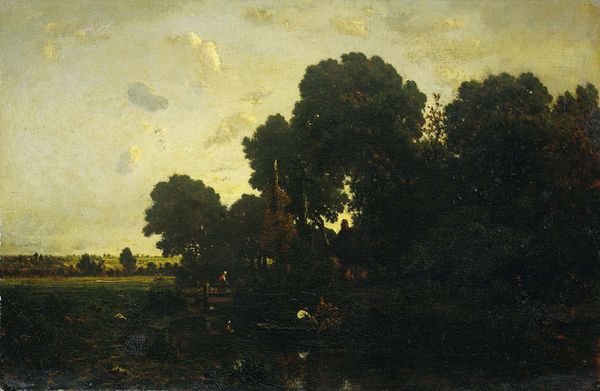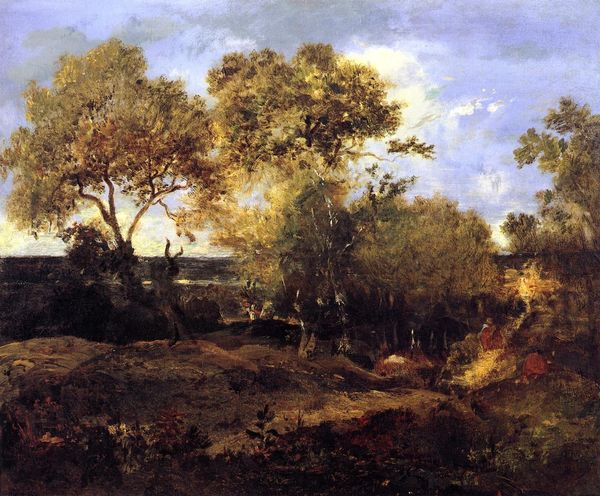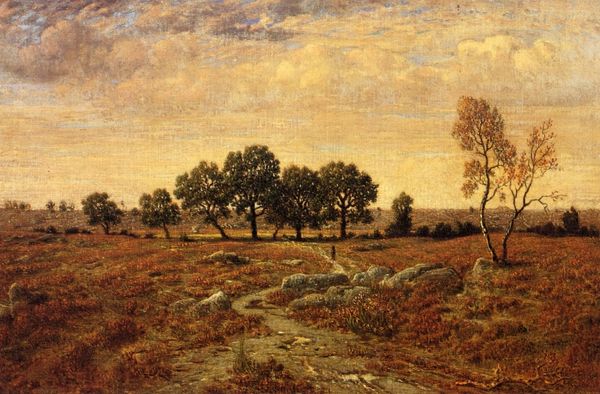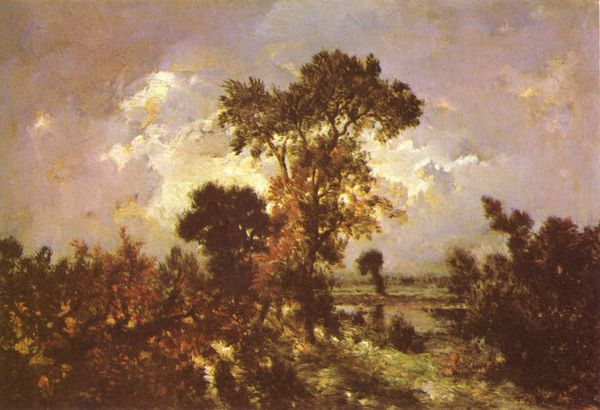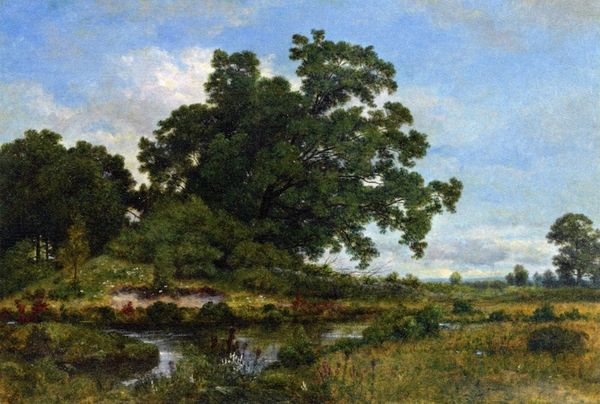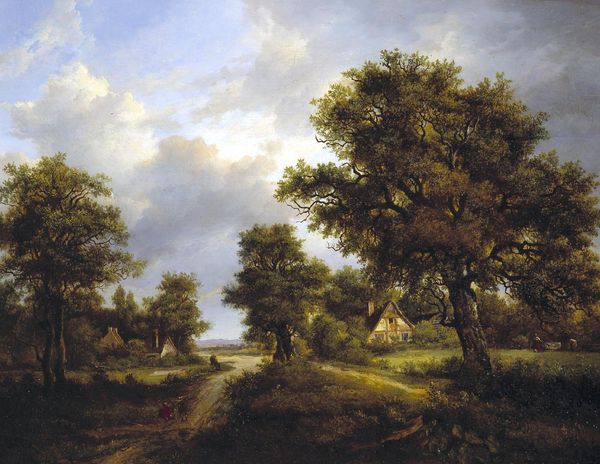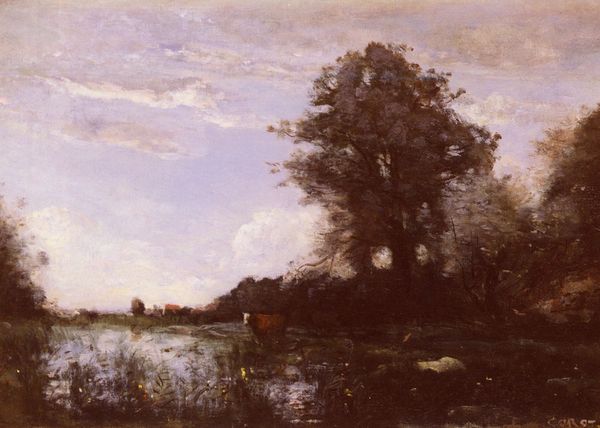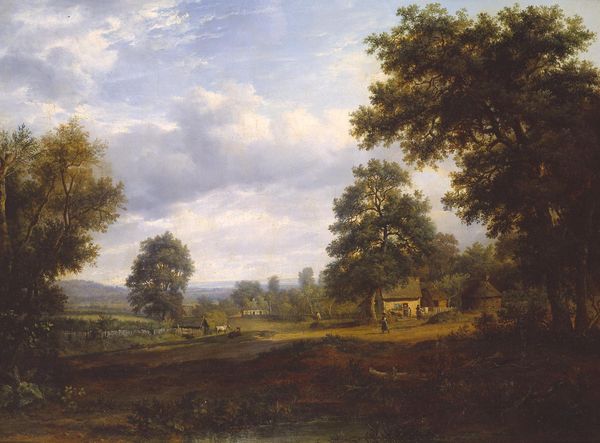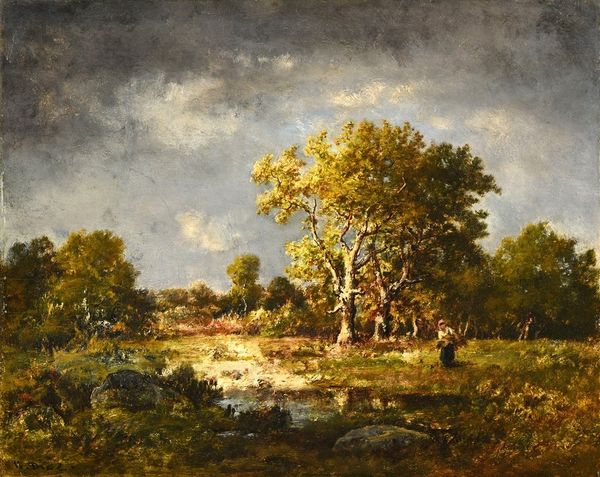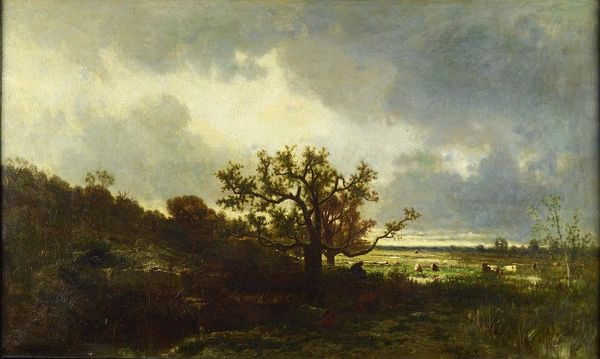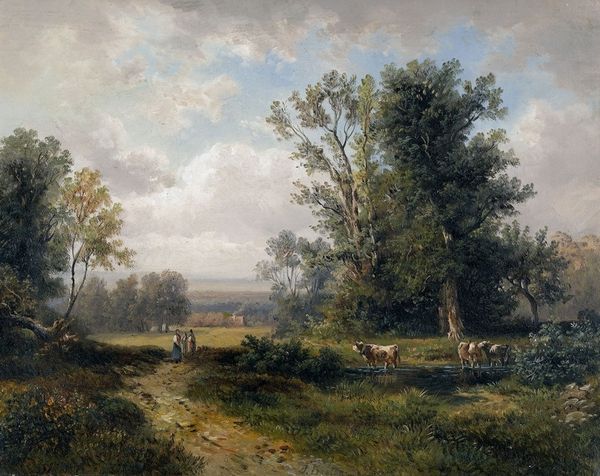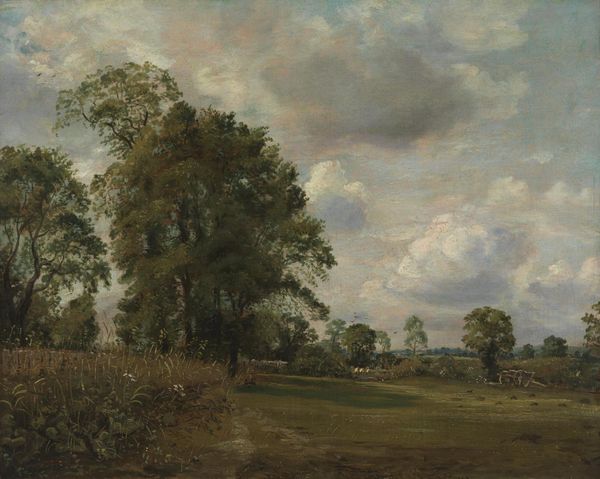
Dimensions: height 32.1 cm, width 40.9 cm, thickness 1.3 cm, depth 10.5 cm
Copyright: Rijks Museum: Open Domain
Editor: Here we have Léon-Victor Dupré’s "Landscape" from 1869, rendered in oil paint. I’m struck by its calming effect. The scene feels very ordinary, yet evokes a deep sense of nostalgia. What do you see in this piece? Curator: The scene resonates because landscape has historically provided fertile ground for projections of national identity. Consider how this unadorned pasture scene evokes, through symbol and memory, a specific cultural idea of “France”. Does the artist hint at enduring symbols of rural stability amid a period of intense social and political upheaval? Editor: I hadn’t thought about that. You mean the painting might carry a message of cultural perseverance? Curator: Indeed. And note the prominent tree to the left – consider how trees throughout history, have acted as metaphors for stability, longevity, even family trees. Could this sturdy presence function as a visual anchor in times of change? And, given the rise of photography, how might Dupré use the landscape genre to evoke something beyond a mere visual record? Editor: So, by looking closely at seemingly simple images like trees, we uncover how much symbolic weight they carry, shaping our cultural understanding? Curator: Exactly. It invites us to consider the quiet strength embedded within the everyday. This is not just a landscape; it's a container of shared cultural meaning. Editor: This makes me rethink how landscape painting often provides the ground for narratives and not just passive records. Curator: Agreed. We found a call for enduring cultural memory, cleverly wrapped in what seems to be a mere representation of the external world.
Comments
No comments
Be the first to comment and join the conversation on the ultimate creative platform.
